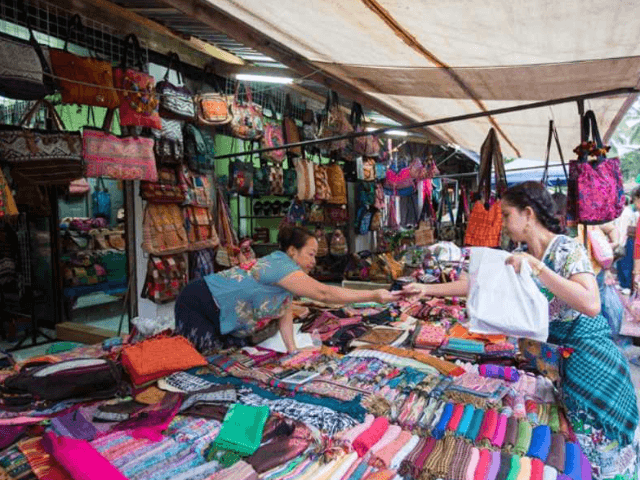Discover Hanoi’s ancient village, a must-visit destination preserving Vietnam’s rich heritage. Explore traditional crafts, historic architecture, and local culture. Plan a half-day visit or join a guided tour with experts like Threeland Travel for a deeper cultural experience.
TABLE OF CONTENTS
1
Introduction – Discover the Hidden Charm of Hanoi’s Ancient Village
Why Hanoi’s Ancient Village is a Must-Visit
A Step Back in Time – What Makes It Special?
How to Get There – Best Ways to Reach the Village
2
History and Cultural Significance of Hanoi’s Ancient Village
The Origins and Heritage of the Village
How Traditional Architecture Has Been Preserved
The Role of the Village in Hanoi’s History
3
Top Attractions in Hanoi’s Ancient Village
Ancient Houses – Architectural Masterpieces Frozen in Time
Historic Pagodas and Temples You Must Visit
Local Markets – A Glimpse into Traditional Vietnamese Life
Traditional Handicrafts – Meet the Skilled Artisans
4
Best Things to Do in Hanoi’s Ancient Village
Take a Stroll Through Historic Alleyways
Experience Local Village Life and Culture
Join a Traditional Craft Workshop
Sample Authentic Vietnamese Cuisine in the Village
5
Photography Spots – Capturing the Essence of Timeless Beauty
Best Angles for Stunning Travel Photos
How to Capture the Village’s Rustic Charm
Sunrise and Sunset Photography Tips
6
Travel Tips for Visiting Hanoi’s Ancient Village
Best Time to Visit for an Authentic Experience
Dress Code and Cultural Etiquette
How to Interact with Locals Respectfully
7
Conclusion – Why Hanoi’s Ancient Village is a Must-Visit Destination
Final Thoughts on Preserving Hanoi’s Timeless Heritage
How to Include This Village in Your Vietnam Itinerary
Introduction – Discover the Hidden Charm of Hanoi’s Ancient Village
Why Hanoi’s Ancient Village is a Must-Visit
Ever wondered what life was like in Vietnam hundreds of years ago? This is your chance to find out! The Ancient Village isn't just another tourist spot – it's a living museum where local artisans still practice traditional crafts passed down through generations. You can watch them make everything from pottery to silk paintings, and even try your hand at some of these ancient arts.
A Step Back in Time – What Makes It Special?
The village is special because it's still alive with activity. It features traditional Vietnamese houses with curved tile roofs, local markets selling handmade crafts, and ancient communal houses where village gatherings still occur. The best part? Real families live here, keeping old traditions alive in their daily lives.
How to Get There – Best Ways to Reach the Village
Getting there is easy from Hanoi's Old Quarter:
- Taxi: 30-minute ride (150,000-200,000 VND)
- Bus: Follow Google Maps or number 47 from Long Bien station
- Motorbike: Follow the main road signs

History and Cultural Significance of Hanoi’s Ancient Village
The Origins and Heritage of the Village
This village, dating back over 800 years, started as a small craft community during the Ly Dynasty—local families specialized in different traditional crafts, from pottery and woodcarving to silk weaving. Many of today's residents are direct descendants of these original craftsmen, proudly carrying on their family traditions.
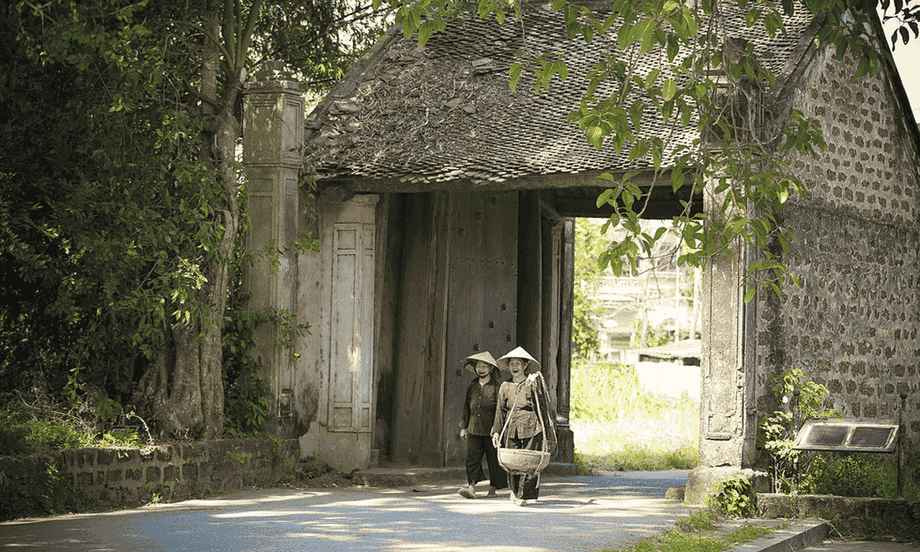
How Traditional Architecture Has Been Preserved
What's amazing about the village is how well it's kept its old-world charm. The traditional tube houses, with their narrow fronts and long layouts, show off classic Vietnamese design. Local families have carefully maintained these historic buildings while making subtle updates to keep them livable. Many houses still feature original wooden beams and traditional courtyards that help keep the buildings cool naturally.
The Role of the Village in Hanoi’s History
This village has always been more than just a pretty place. It played a key role in Hanoi's development as a major craft and trading hub. Through wars and changes, it has kept traditional Vietnamese culture alive, showing us how beautiful old traditions can thrive alongside modern life.
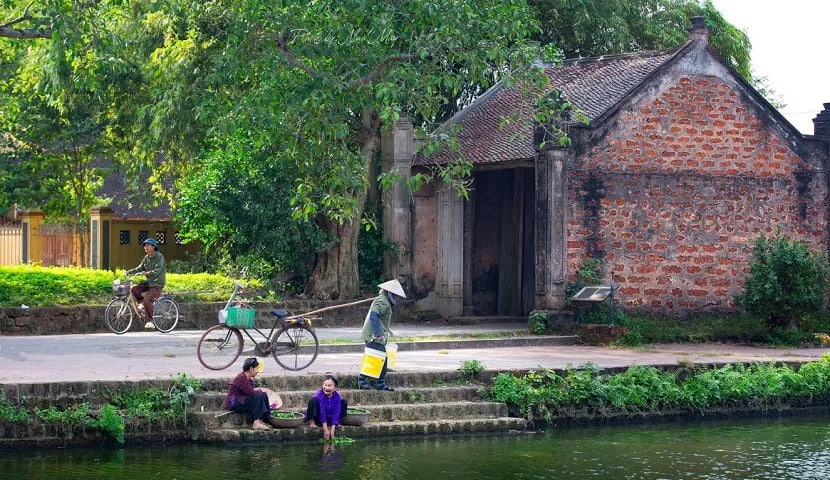
Top Attractions in Hanoi’s Ancient Village
Ancient Houses – Architectural Masterpieces Frozen in Time
Step into the past as you explore the centuries-old houses in Hanoi’s ancient villages. Many of these homes are made of wood and laterite bricks, showcasing traditional Vietnamese architecture. Duong Lam Ancient Village, for example, is famous for its preserved communal houses and ancient wells. Visiting these homes feels like walking through a living museum, where you can admire carved wooden details and learn about the lives of the families who’ve lived there for generations.
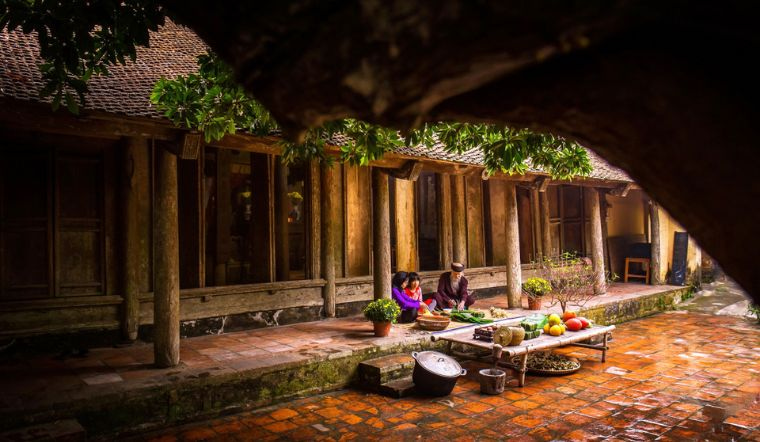
Historic Pagodas and Temples You Must Visit
The ancient villages around Hanoi are home to stunning pagodas and temples that reflect Vietnam’s deep spiritual roots. A must-see is Mia Pagoda in Duong Lam Village, which dates back to the 15th century and houses over 200 statues of Buddha. Another highlight is the Ngo Quyen Temple, dedicated to one of Vietnam’s great national heroes. These sacred sites are not only beautiful but also provide insight into local beliefs and traditions.
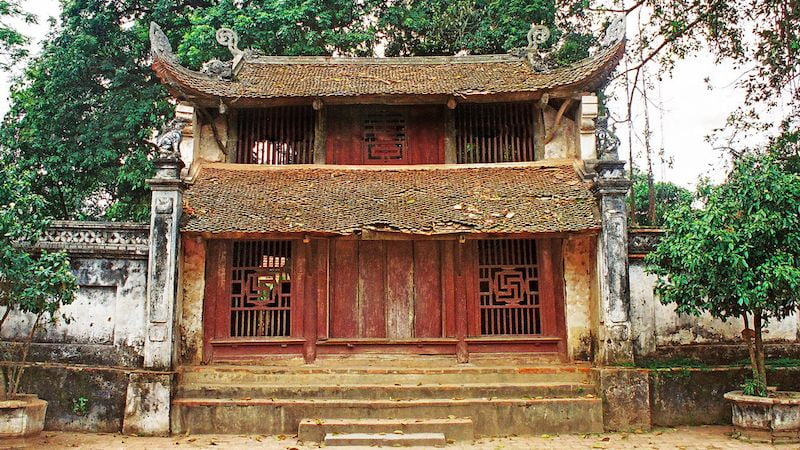
Local Markets – A Glimpse into Traditional Vietnamese Life
The local markets are the heart of these ancient villages. Here, you’ll find fresh produce, handmade goods, and the lively spirit of daily life. Visiting the markets is a sensory experience—you can see locals bargaining, smell aromatic street food, and even try traditional snacks. These markets are not just places to shop but also offer a window into the everyday lives of villagers.
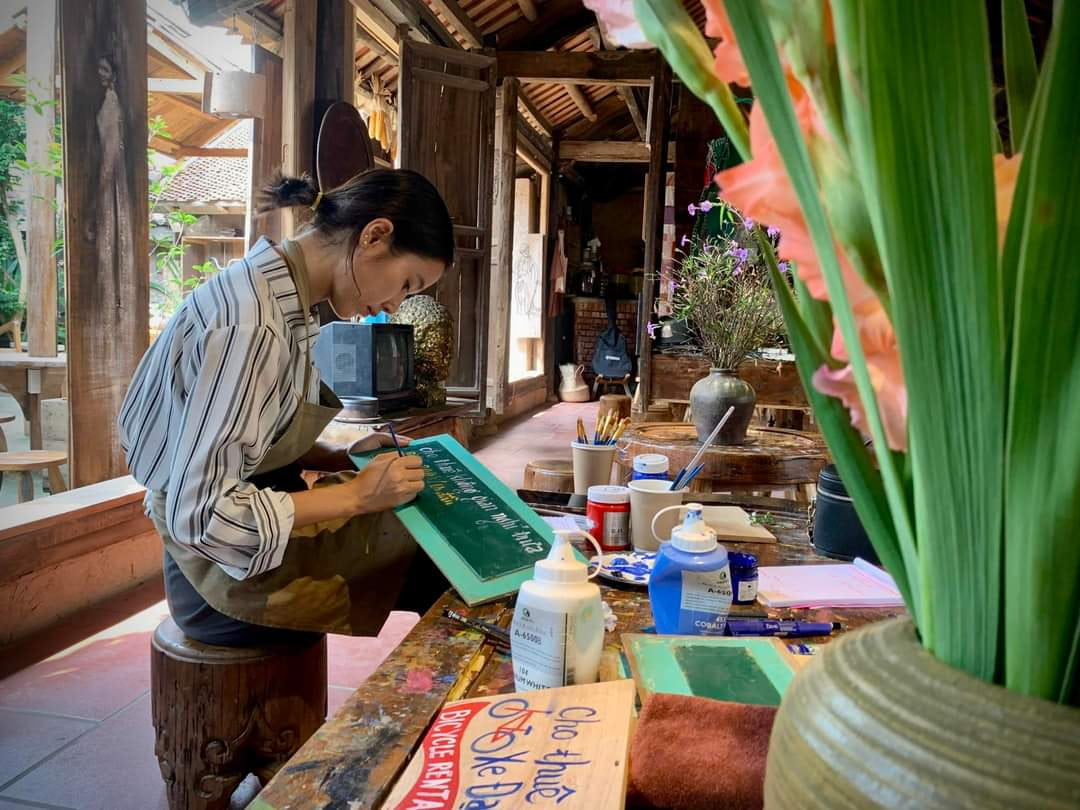
Traditional Handicrafts – Meet the Skilled Artisans
Hanoi's ancient villages are famous for their traditional handicrafts, many of which have been passed down through generations. Bat Trang, a pottery village just outside Hanoi, is one of the most popular spots where artisans shape, paint, and fire ceramics. In other villages, such as Van Phuc, you’ll find silk-weaving workshops where you can watch the process from start to finish. These villages are perfect for picking up unique, handmade souvenirs while supporting local artisans.
.jpg)
Best Things to Do in Hanoi’s Ancient Village
Take a Stroll Through Historic Alleyways
Wandering through the narrow, winding alleyways of these ancient villages is like stepping back in time. Each turn reveals charming old houses, lush gardens, and friendly locals going about their daily routines. Take your time to appreciate the intricate architecture and vibrant street life—it's a photographer's dream!
Experience Local Village Life and Culture
Engage with the locals to truly connect with the heart of the villages. Many residents are happy to share stories about their traditions and daily lives. You might be invited to a village festival or local gathering, which will give you a firsthand look at the area's rich cultural tapestry.
Join a Traditional Craft Workshop
Participating in a craft workshop is a fantastic way to learn about the skills that have been passed down through generations. Whether it's pottery in Bat Trang or silk weaving in Van Phuc, these hands-on experiences allow you to create your own keepsake while understanding the artistry behind these beloved crafts.
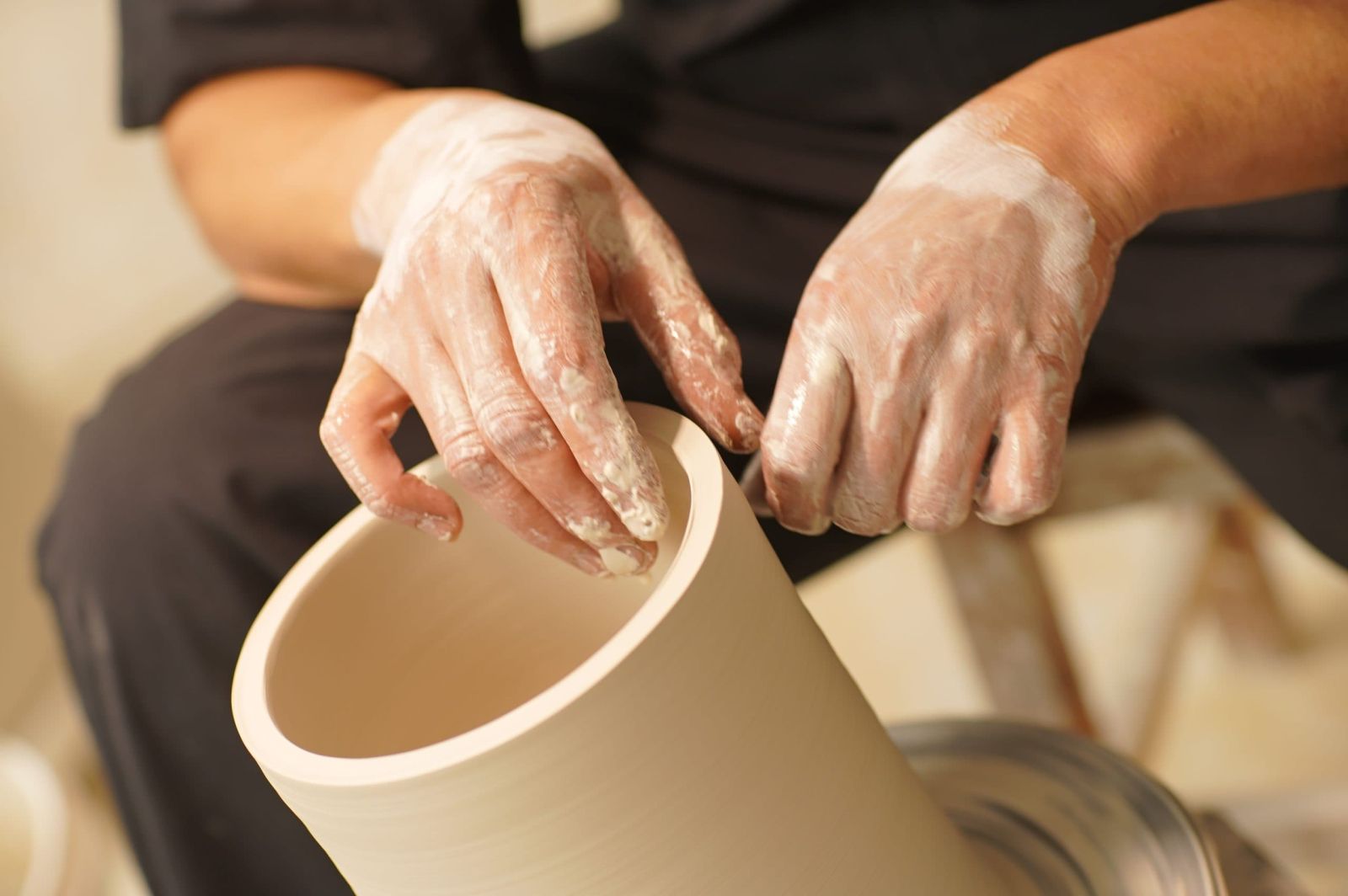
Sample Authentic Vietnamese Cuisine in the Village
No visit is complete without indulging in the local cuisine! Explore village eateries and street stalls to savor authentic dishes like pho, banh cuon, and fresh spring rolls. Many places offer cooking classes, so you can learn to prepare your favorite dishes using fresh, local ingredients.

Photography Spots – Capturing the Essence of Timeless Beauty
Best Angles for Stunning Travel Photos
Experiment with low angles to emphasize the grand architecture. Use leading lines like paths to draw the eye. Get close to capture details like carved doors.
How to Capture the Village’s Rustic Charm
Focus on authentic, simple moments of daily life. Capture textures like weathered wood and cobblestone. Overcast days offer soft, even light natural colors.
Sunrise and Sunset Photography Tips
Scout locations with clear views of sunrise or sunset, such as the banks of a pond or the top of a hill. Use a tripod for sharp low-light shots. Capture warm golden hour tones and silhouettes of houses or temples.
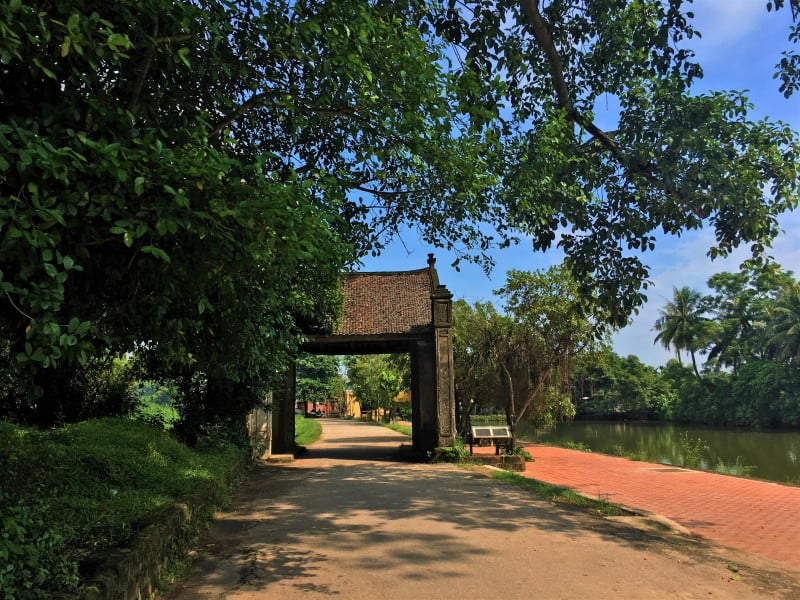
Travel Tips for Visiting Hanoi’s Ancient Village
Best Time to Visit for an Authentic Experience
The best time to visit Hanoi's ancient villages is during the spring or fall seasons. The weather is mild, and you'll be able to witness local festivals and cultural events that provide a more authentic glimpse into village life. Avoid the hot, humid summers and cold, rainy winters if possible.
Dress Code and Cultural Etiquette
When visiting the ancient villages, dress conservatively to respect the local customs. Avoid revealing clothing, and cover your shoulders and knees. Remove your shoes before entering homes, temples, and other sacred sites. Be mindful of your volume and gestures, and avoid pointing your feet toward Buddha statues or elders.
How to Interact with Locals Respectfully
Approach the villagers with a friendly, open attitude. Greet them with a smile and a simple "xin chào" (hello in Vietnamese). Avoid taking photos without permission, and be respectful if a local declines to be photographed. If you engage in conversation, keep it light and avoid topics that may be sensitive. Offer a small gift, such as local snacks or craft items, as a gesture of goodwill.
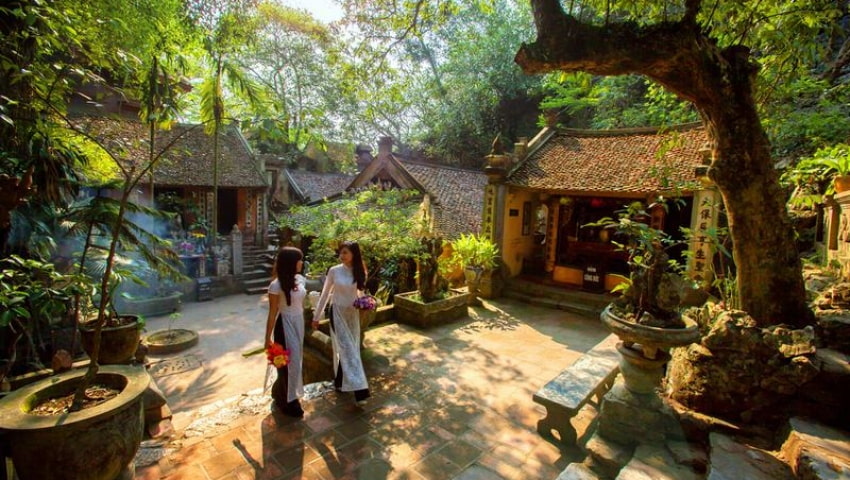
Conclusion – Why Hanoi’s Ancient Village is a Must-Visit Destination
Final Thoughts on Preserving Hanoi’s Timeless Heritage
In a world that's changing so quickly, places like this ancient village are precious gems we need to protect. It's not just about pretty buildings or traditional crafts – it's about keeping a piece of Vietnam's soul alive. Every visit helps support the local families who work hard to preserve these traditions for future generations.
How to Include This Village in Your Vietnam Itinerary
The best way to experience the village is to give yourself at least half a day to explore. Morning visits are ideal, and you might consider joining a guided Vietnam tour to learn the fascinating stories behind each corner. Local agencies like Threeland Travel can help you plan a visit that fits perfectly into your Vietnam journey, often combining it with other nearby cultural spots for a richer experience.










